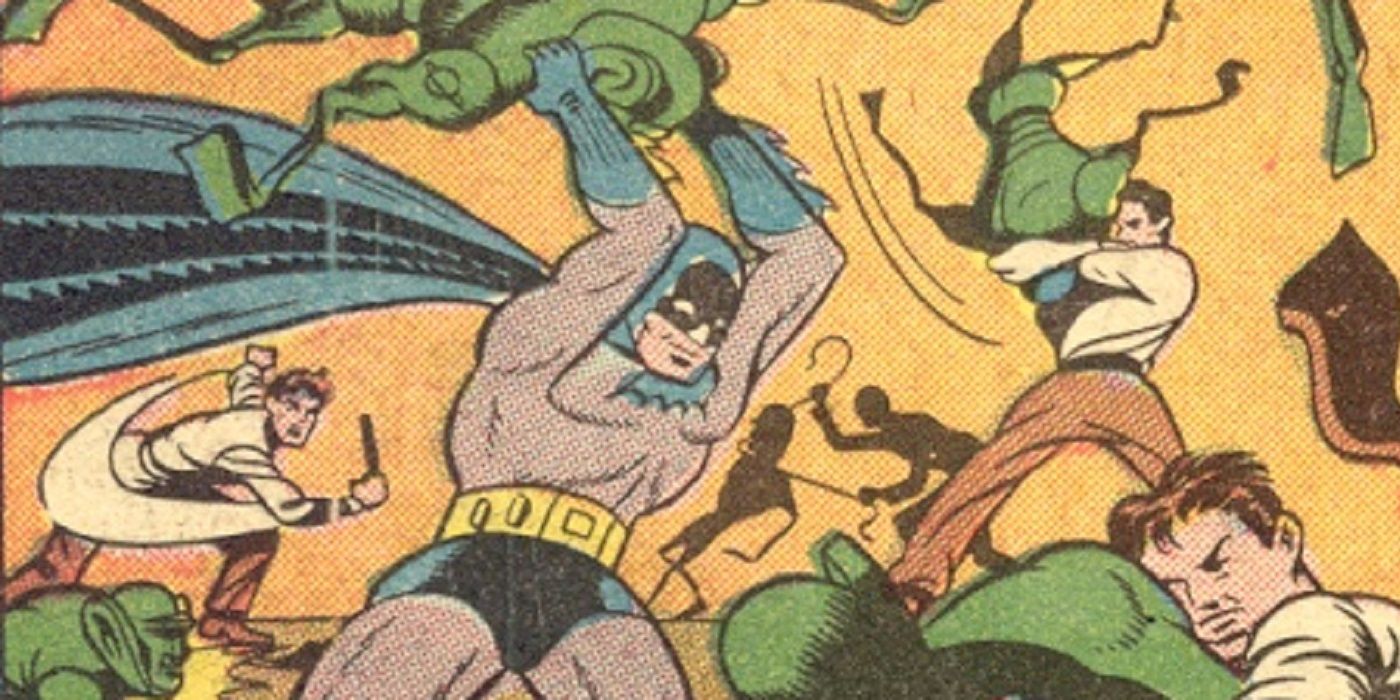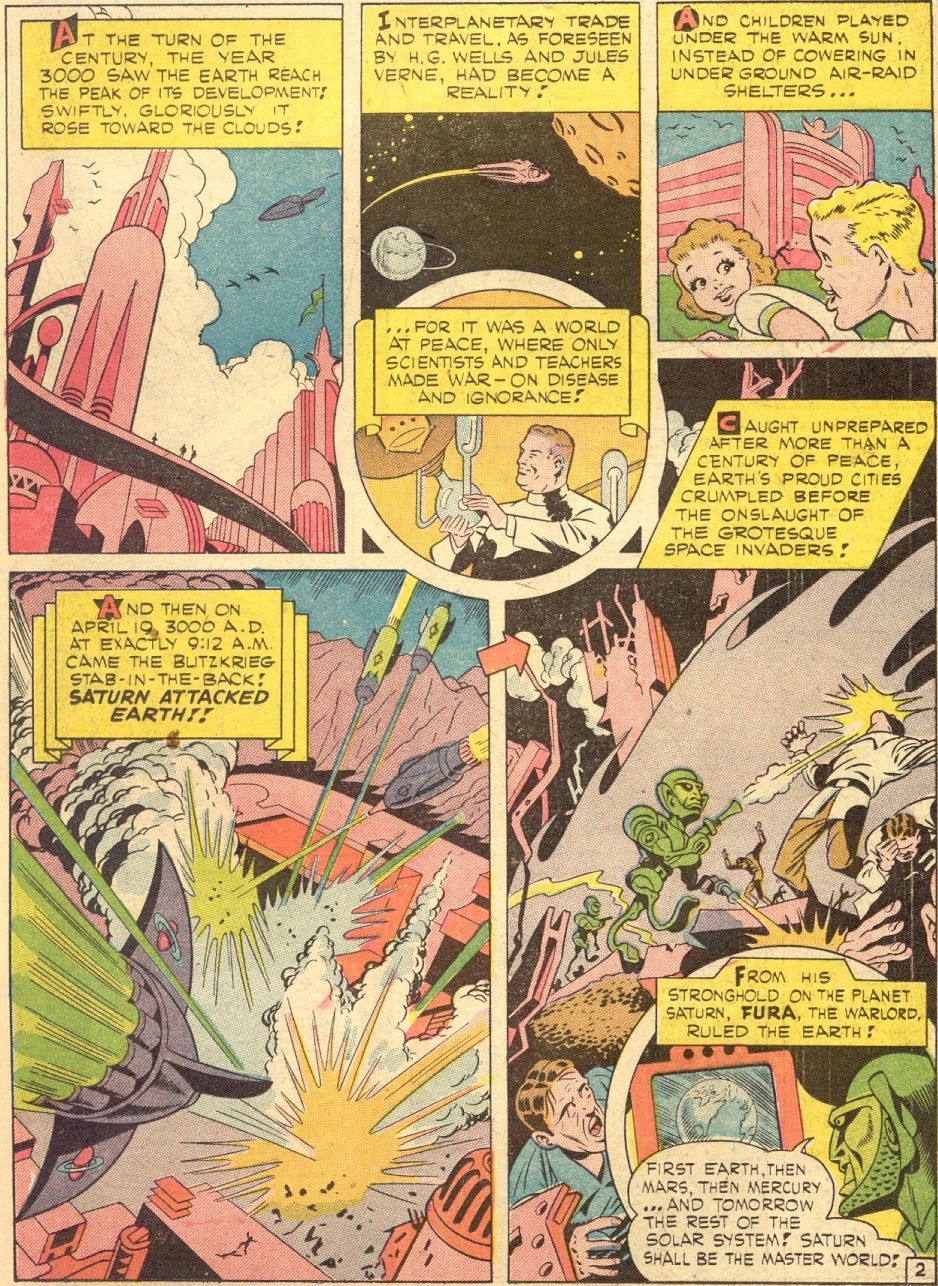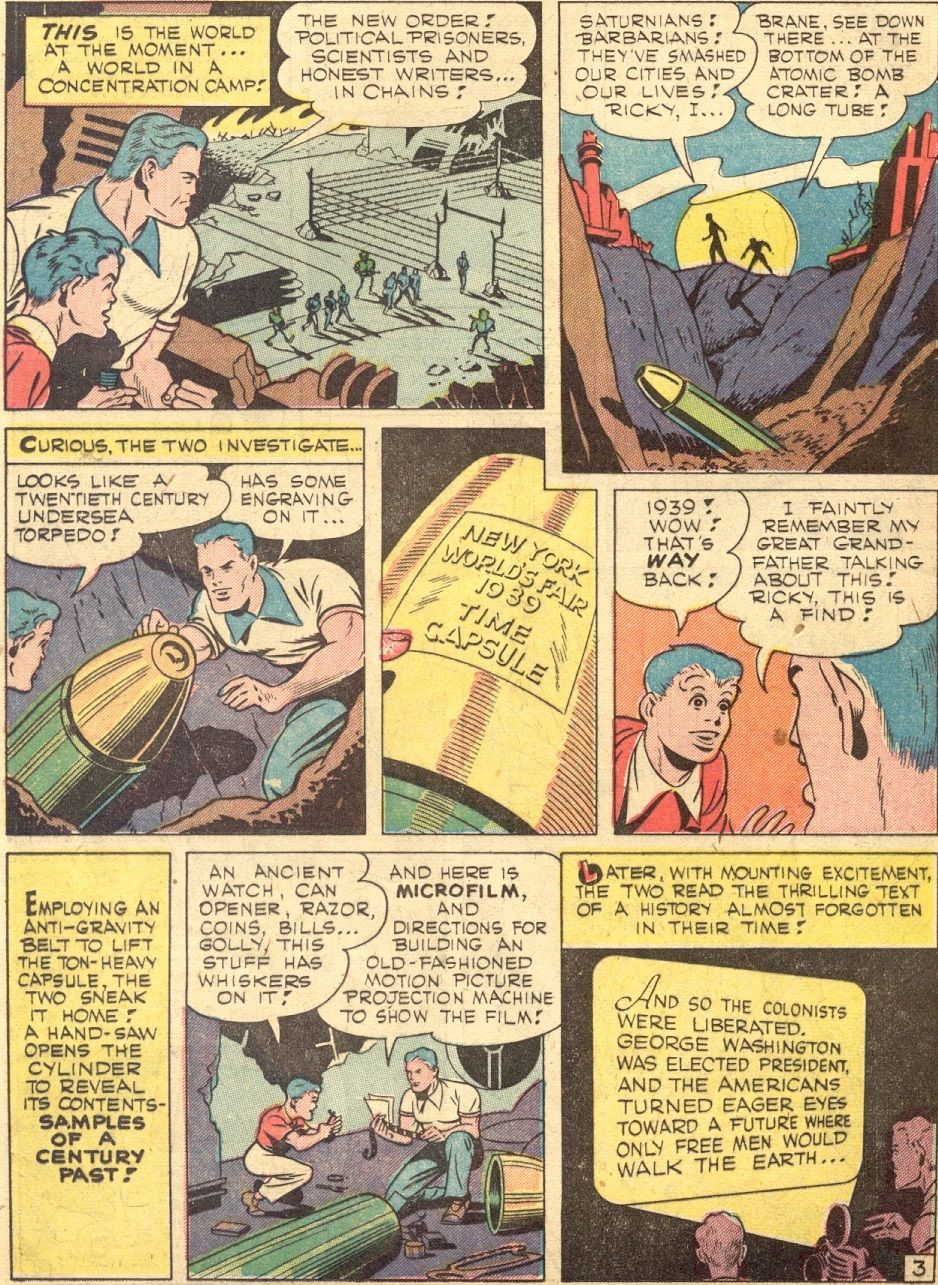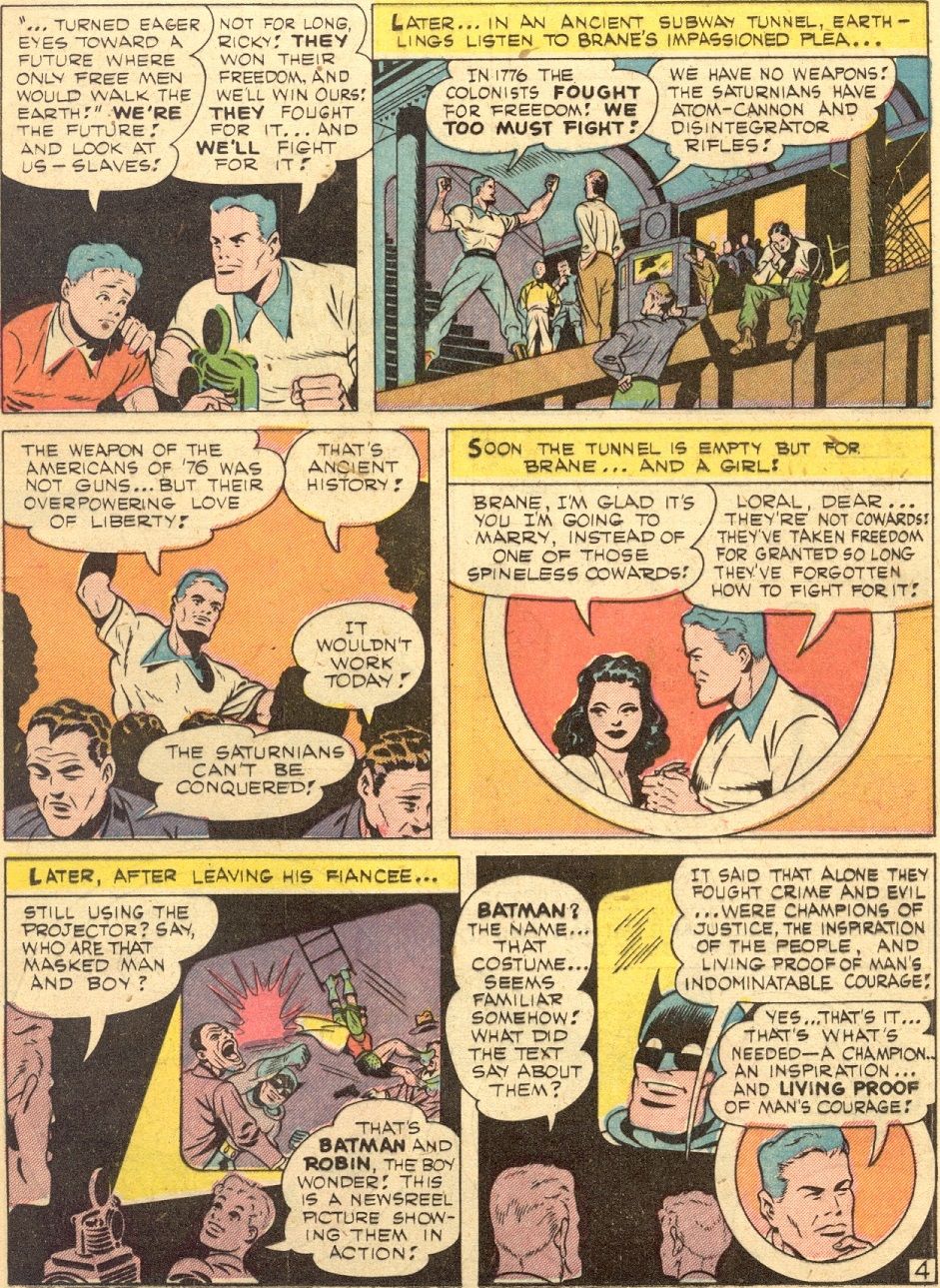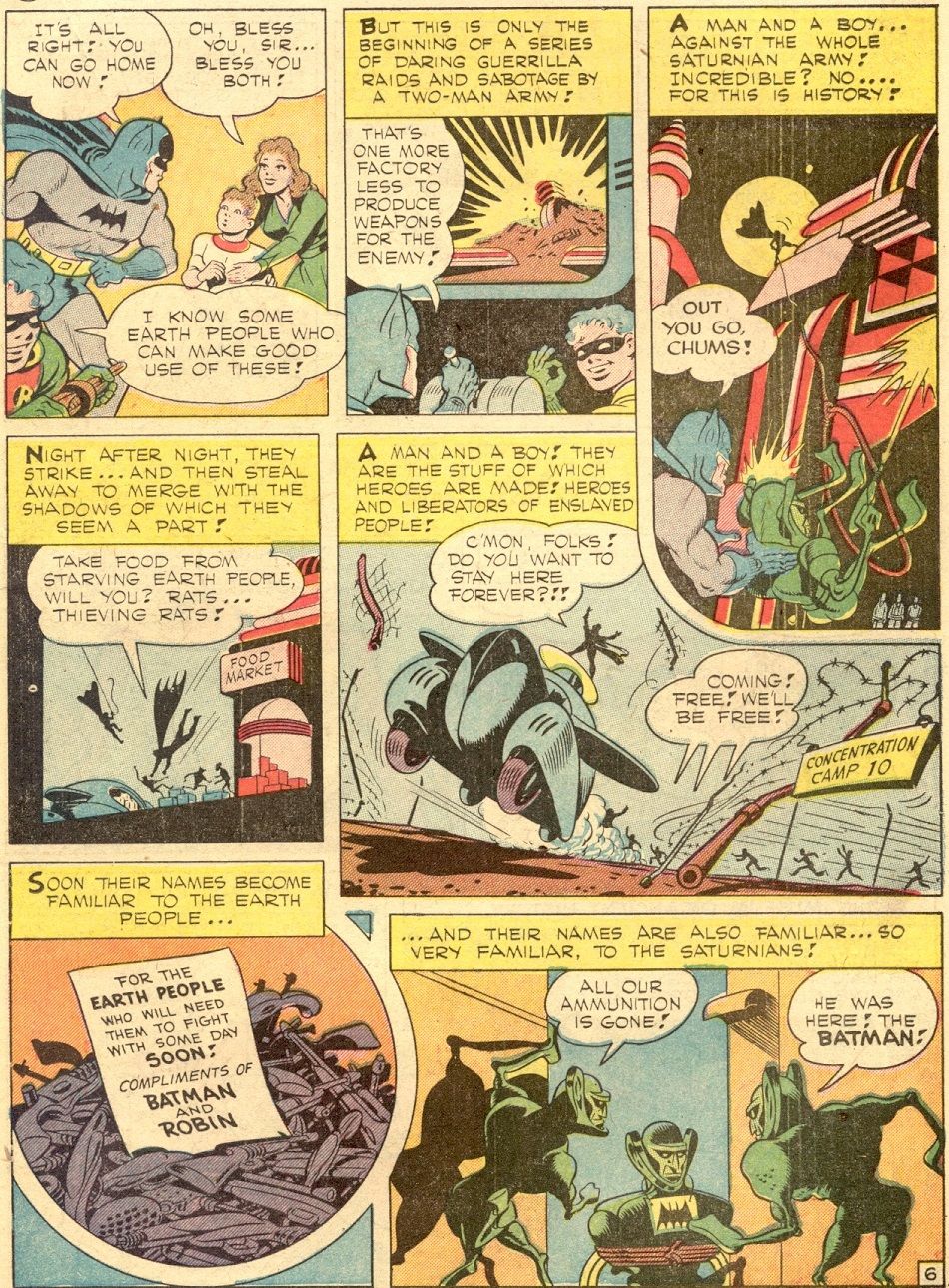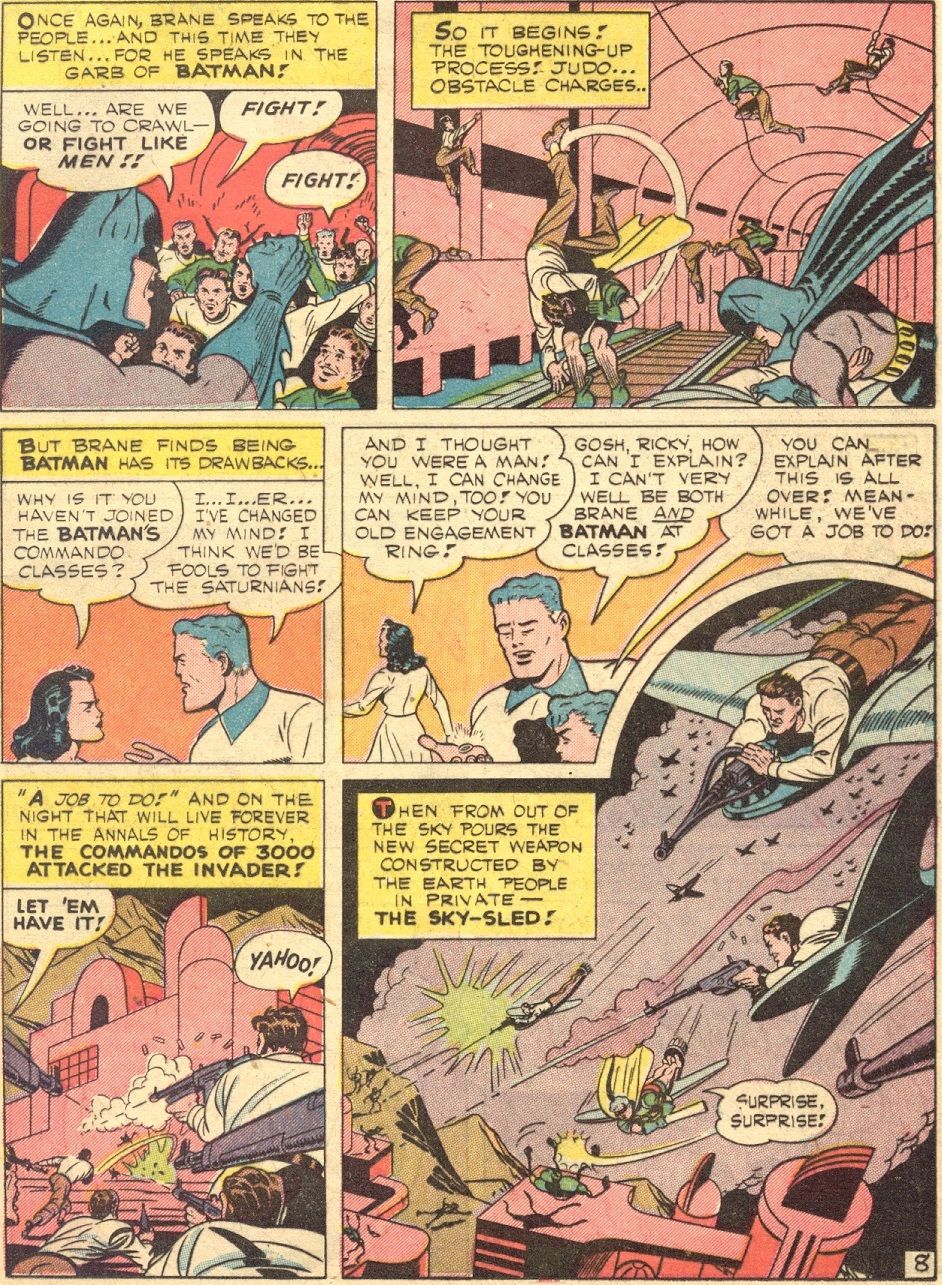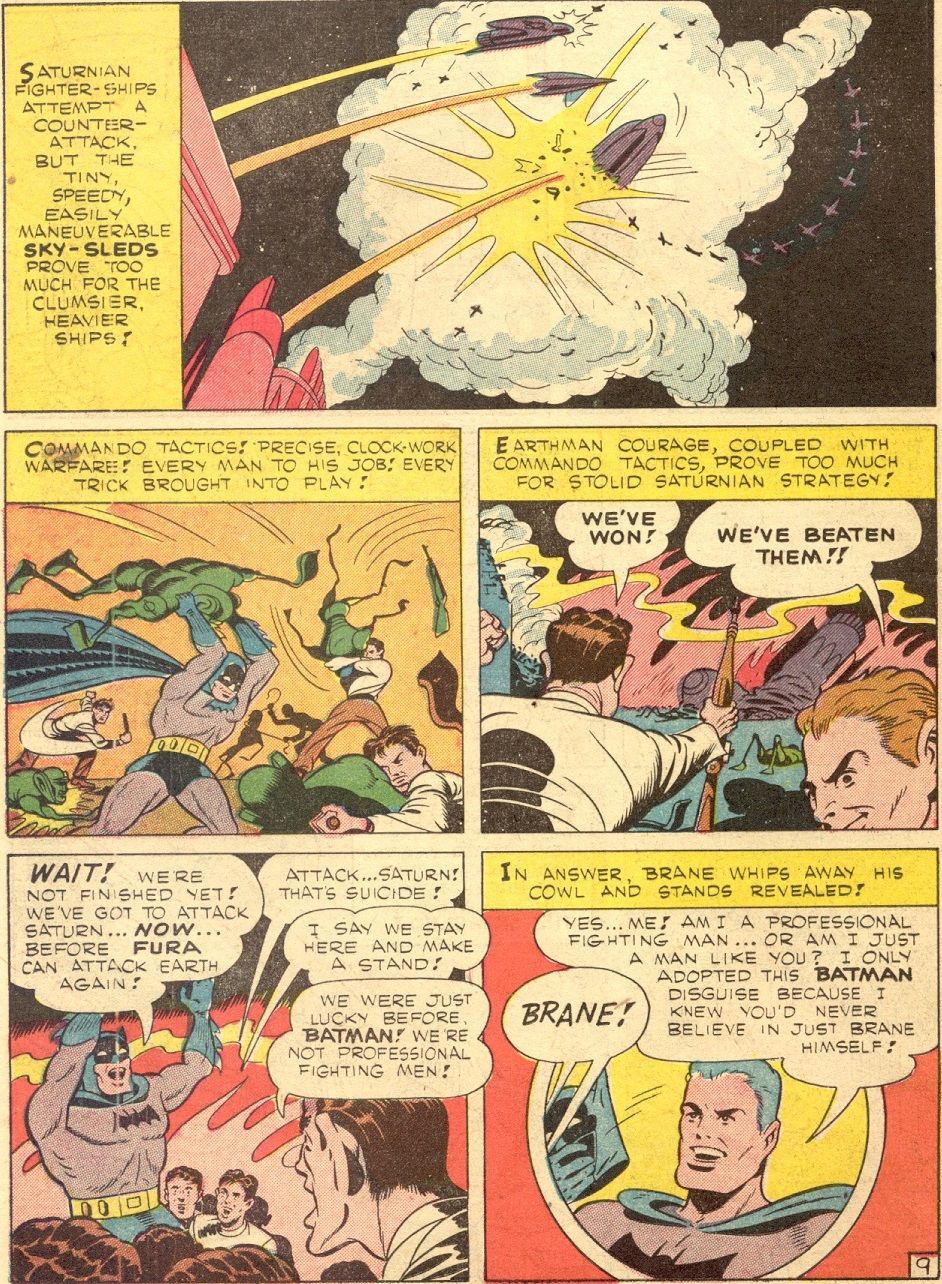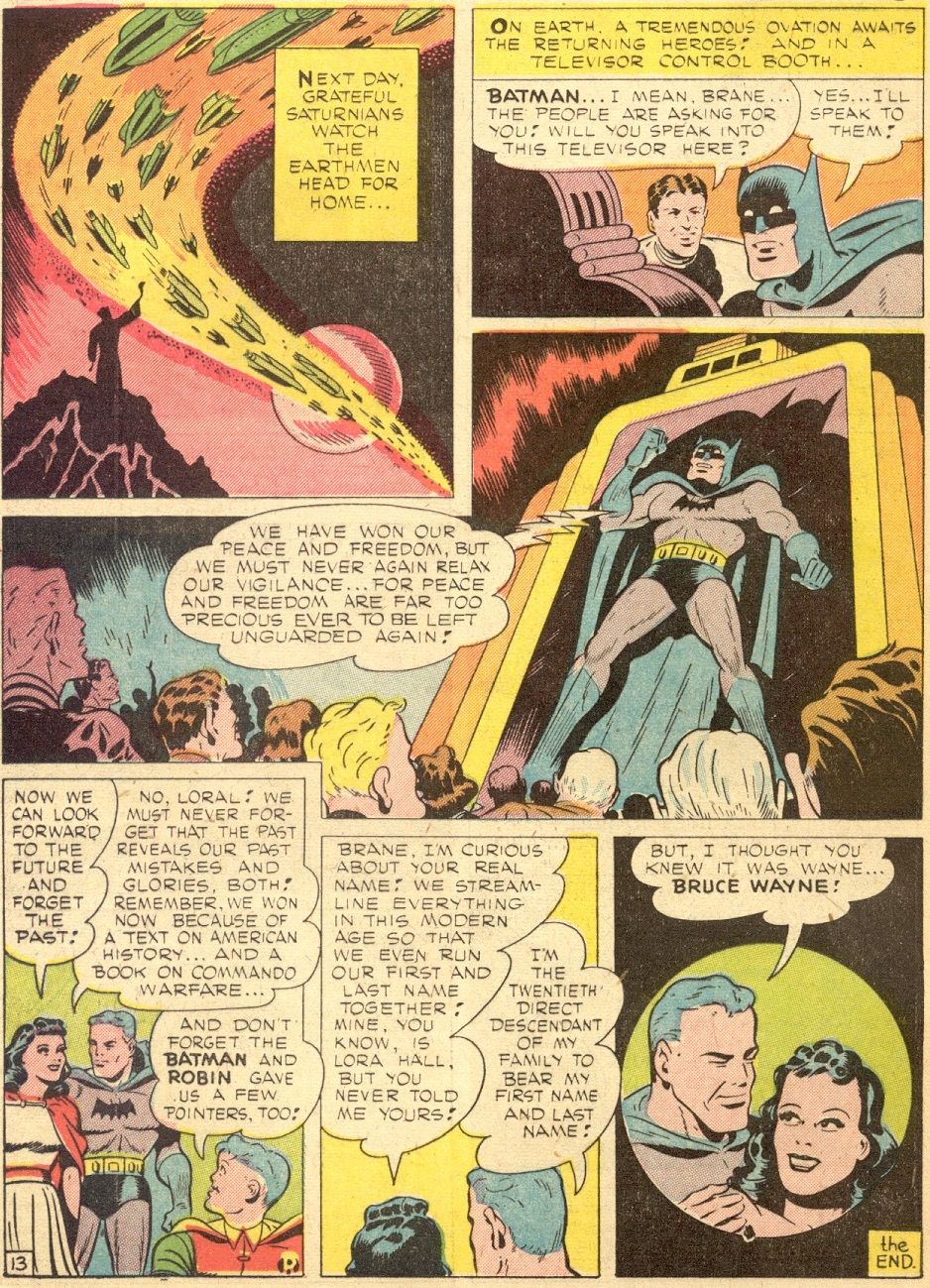This is "Look Back," a feature that I plan to do for at least all of 2019 and possibly beyond that (and possibly forget about in a week, who knows?). The concept is that every week (I'll probably be skipping the four fifth weeks in the year, but maybe not) of a month, I will spotlight a single issue of a comic book that came out in the past and talk about that issue (often in terms of a larger scale, like the series overall, etc.). Each week will be a look at a comic book from a different year that came out the same month X amount of years ago. The first week of the month looks at a book that came out this month ten years ago. The second week looks at a book that came out this month 25 years ago. The third week looks at a book that came out this month 50 years ago. The fourth week looks at a book that came out this month 75 years ago.
We'll be doing October in a day!
We conclude the month with Joseph Greene and Dick Sprang's "The Year 3000!" from October 1944's Batman #26, the first alternate version of Batman!
The story opens in the year 3000, where we see that Saturn has conquered the Earth...
A time capsule is discovered, which teaches them about Batman and Robin...
What's fascinating is that they do traditional guerrilla fighting tactics, involving stealing guns for the resistance...
The attacks are actually fairly violent...
Once they've repulsed the invasion, they actually then travel to Saturn and defeat them, as well, where we learn that the "Saturnians" are actually robots and the real Saturnians were taken over by the invaders.
We then discover that Brane is actually Bruce Wayne XX!
This had major historical impact as it was the first time that an alternate version of Batman was introduced in a Batman comic book. Greene was a major science fiction author of the era. He also wrote a number of Golden Age era comic books.
If you have any suggestions for November (or any other later months) 2009, 1994, 1969 and 1944 comic books for me to spotlight, drop me a line at brianc@cbr.com! Here is the guide, though, for the cover dates of books so that you can make suggestions for books that actually came out in the correct month. Generally speaking, the traditional amount of time between the cover date and the release date of a comic book throughout most of comic history has been two months (it was three months at times, but not during the times we're discussing here). So the comic books will have a cover date that is two months ahead of the actual release date (so October for a book that came out in August). Obviously, it is easier to tell when a book from 10 years ago was released, since there was internet coverage of books back then.

